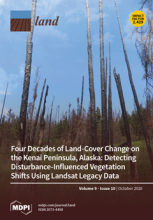Land Library Search
Through our robust search engine, you can search for any item of the over 73,000 highly curated resources in the Land Library.
If you would like to find an overview of what is possible, feel free to peruse the Search Guide.
/ library resources
Showing items 28 through 36 of 1319.Climate-wise connectivity is essential to provide species access to suitable habitats in the future, yet we lack a consistent means of quantifying climate adaptation benefits of habitat linkages.
Globally, protected areas are faced with a myriad of threats emanating principally from anthropogenic drivers, which underpins the importance of the human element in protected area management.
Protected area managers rely on relevant, credible, and legitimate knowledge.
Effective protection of biodiversity in areas of high conservation value requires trade-offs between local use of natural resources and conservation restrictions.
Conservationists recognize the value of protected area (PA) systems, with adequate coverage, ecological representation, connection, and management to deliver conservation benefits. Yet, governments primarily focus on coverage, disregarding quantification of the other criteria.
Monitoring of improper soil erosion empowered by water is constantly adding more risk to the natural resource mitigation scenarios, especially in developing countries.
This study is the first analysis of the influence of the design of the logos of the National and Natural Parks of Spain on social attitudes toward these protected areas (PAs).
The constant declaration of new protected natural spaces that has taken place on a world scale in recent decades has caused changes in rural areas, where these spaces are often host to traditional activities that have acted over time as the area’s main sources of wealth.








